This is an image of the type-B aurora of Earth, also called the SAR ARC.
L. Frank from Dynamics Explorer
Neptune Aurora
Aurora has been seen in the atmosphere of Neptune which is centered around the magnetic pole, as it should be for type-A aurora, nevertheless Neptune mostly has type-B aurora similar to the SAR ARC of Earth (shown here).
The rings of Neptune sweep away much of the particles in the area which is supposed to be the plasmasphere. Therefore there is only a small plasmasphere containing trapped particles, and a lot less plasma to be forced from the magnetosphere down into the atmosphere to create the aurora.
No radio signals from Neptune have been detected which relate to aurora or auroral processes, and scientists are still working to understand the currents which cause aurora.
You might also be interested in:
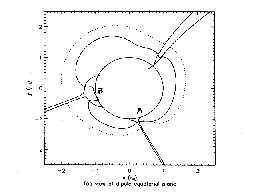
Neptune has three small plasmaspheres which are greatly affected by Neptune's rings. Particles enter the plasmasphere from Neptune's atmosphere as well as the magnetotail. Particles might leave the plasmasphere
...more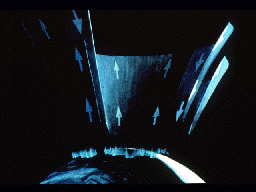
This picture shows the flowing of particles into and out of the auroral zone, as Field-Aligned currents (FAC's) take at short-cut through the atmosphere. Some of the particles entering the auroral zone
...more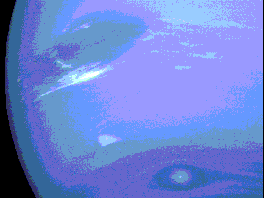
One of the many cloud patterns of Neptune is the "scooter" which was discovered by Voyager in 1989. In this picture, the Great Dark Spot is in the upper left of the image, and just below the Spot is a
...more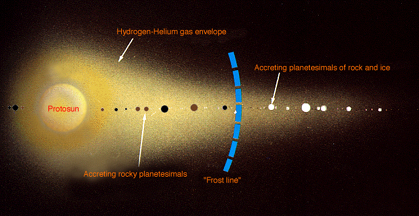
The position of the planets in the solar nebula affected how big they became and what they were made of. The blue line in the picture shows where it became so cold that ice began to form. Planets that
...more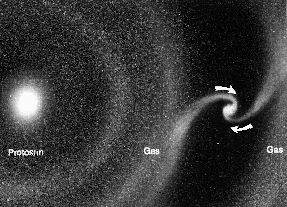
As shown in this picture, while they were forming in the solar nebula, the core of the planets-to-be drew material to themselves from the cloud of gas and dust around them. The bigger planets-to-be were
...more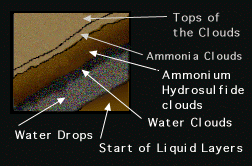
There is no surface to the giant planets. There is only a gradual change from the atmosphere, as shown in this drawing. Therefore the giant planets do not have layers, as the earth-like planets do. Ice
...more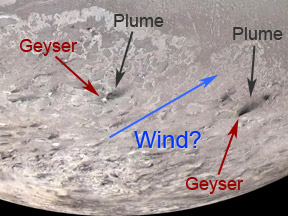
Triton is the largest moon of Neptune. It isn't quite as big as Earth's Moon. The surface of Triton is very, very cold. It is colder than the surface of any other planet or moon in our Solar System. It
...more















